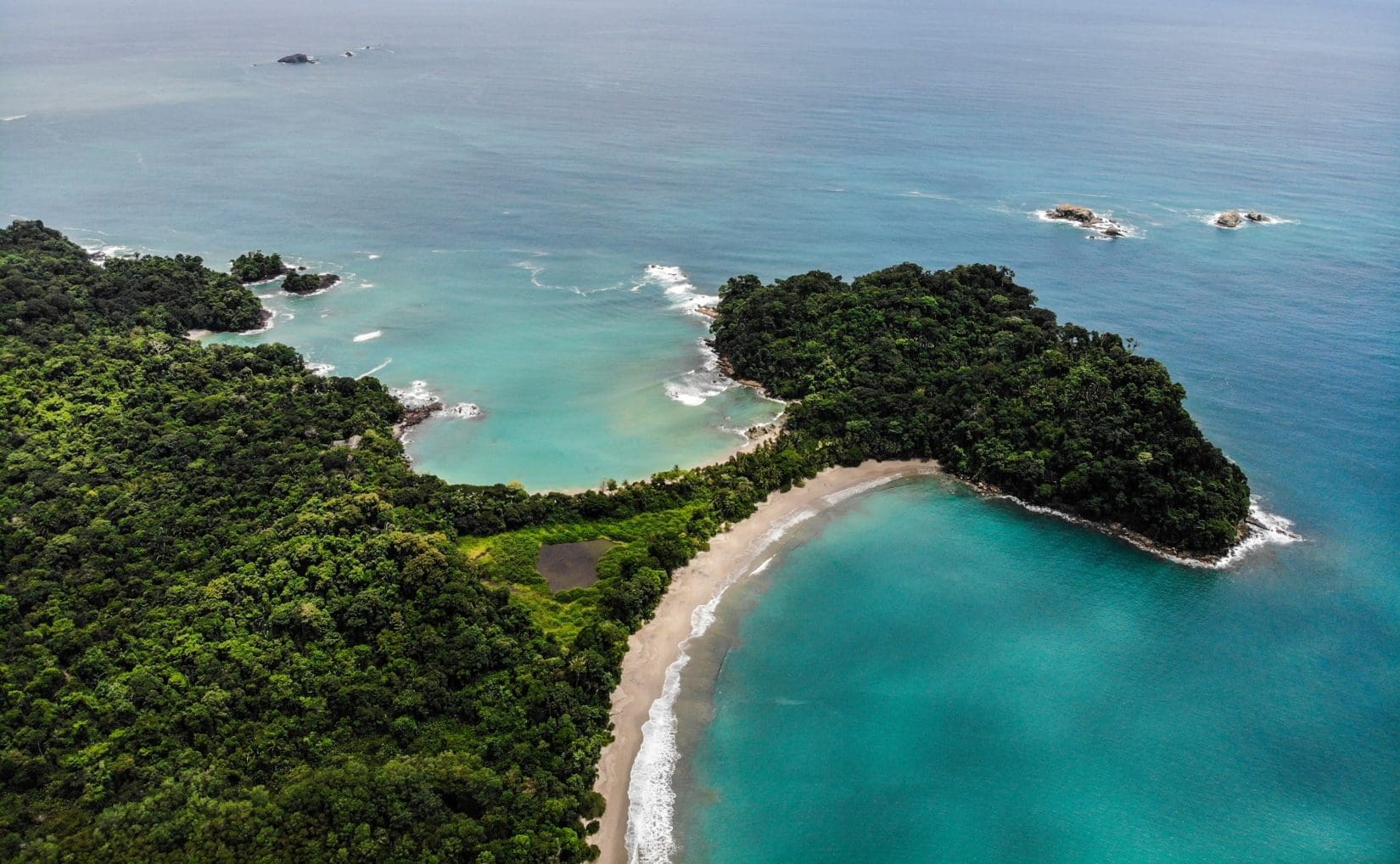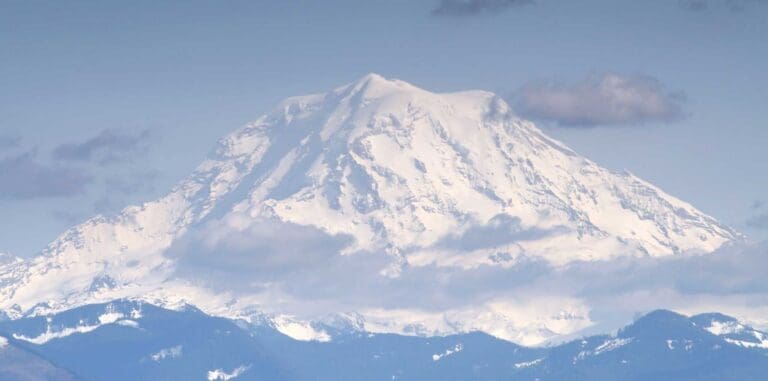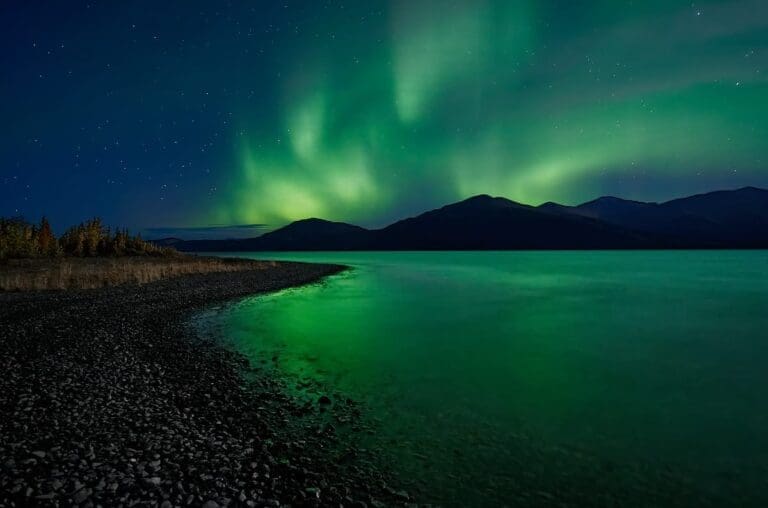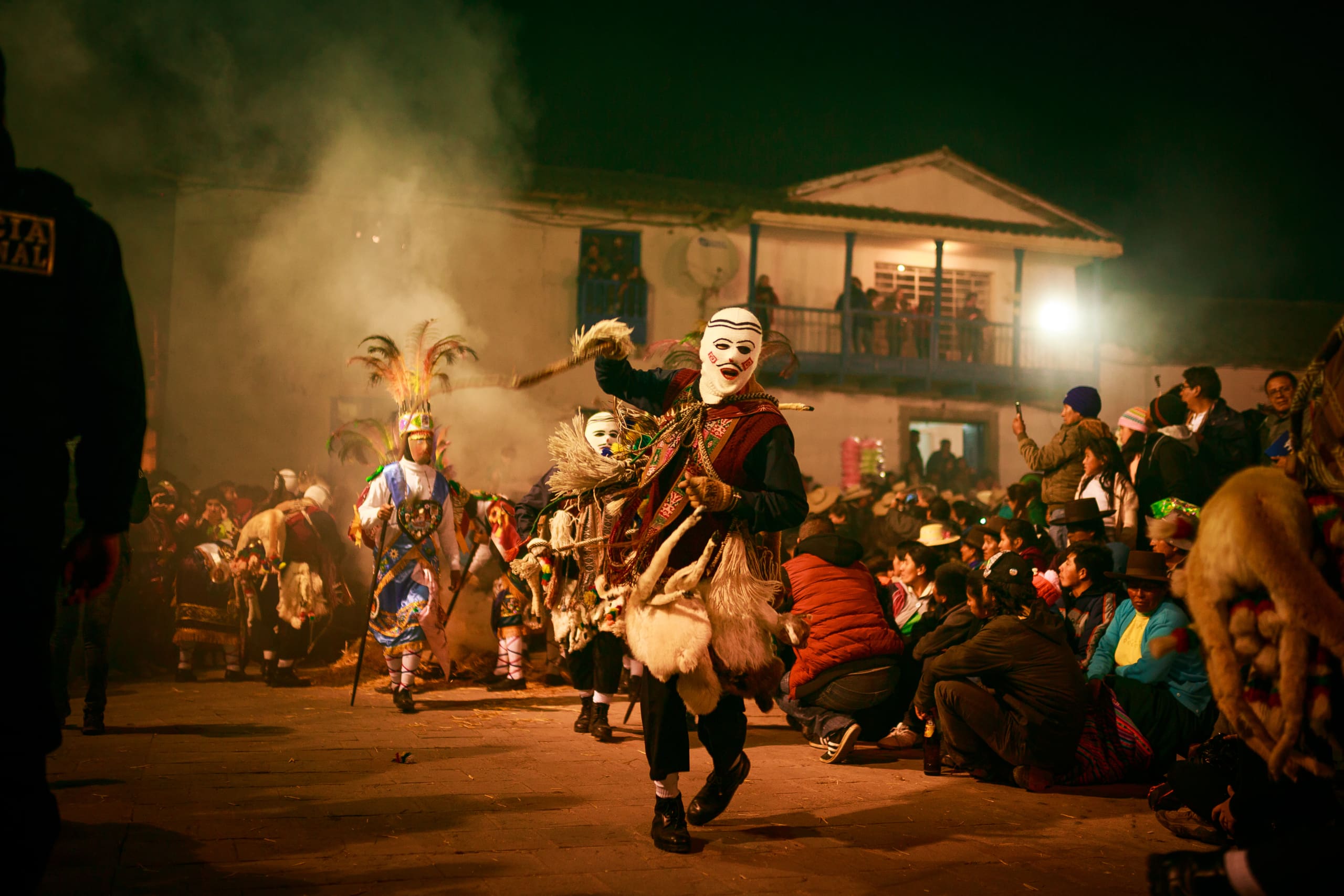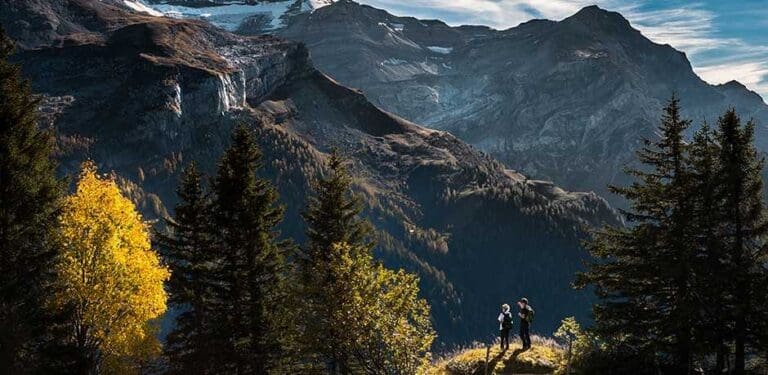A Traveler’s Handbook to Manuel Antonio in Costa Rica – Everything to Know for Your Trip
If you’re interested in visiting the famed national parks of Costa Rica, consider adding Manuel Antonio to your list. A bite-sized chunk of primeval rainforest that spreads across a tombolo on the wild Pacific Coast, Manuel Antonio is known for being one of the most biodiverse places on Earth. The stats speak for themselves: 184 species of birds, three out of four of Costa Rican monkey species, two types of sloths – we could go on and on.
All that draws a hefty crowd, who filter through the bustling gateway town of Quepos and into a relatively small reserve of just 4,900 acres (1,983 hectares) – the smallest in the country, no less. But there’s still room enough for beaches with cotton-tinged sand, endless groups of manzanillo trees and buttonwoods, and a series of the best day hikes Central America has to offer.
Discover the wonders of Manuel Antonio with this comprehensive travel guide. Packed with insider tips, this guide covers everything you need to know to make the most of your visit, including transportation options, ideal times to go, and top things to do, as well as recommendations for hotels, dining, and the best beaches. You’ll even find a sample itinerary to help you better plan your trip. For more information, check out this amazing Manuel Antonio trip.
My experience in Manuel Antonio
I didn’t think it was quite so easy to get up close and personal with the famed wildlife of Costa Rica. Then I visited Manuel Antonio National Park. Less than five minutes after entering the off-the-beaten-path reserve, I was hushed into silence in the hopes of spotting a Hoffman’s two-toed sloth in the canopy above. That’s the sort of amazing thing that happens here every single day – a vision of a swinging howler monkey one moment, a glimpse of a humpback whale splashing in the ocean the next.
I also can’t overstate the joy of having a paradise beach right on the doorstep of your resort. After a day’s trekking, you can crash on long runs of glimmering sand threaded by coconut palms from tip to toe. Nice.
One of my favorite adventure destinations is Costa Rica, a place where I have explored extensively. In my time there, I especially loved everything from the hanging bridges and zip lines around Arenal and surfing in Jaco, to the rich history of coffee farms near San José. With a strong sense of sustainability, amazing opportunities for adventure, and some of the most beautiful beaches and landscapes around, Costa Rica and Manuel Antonio in particular are worth seeing for any traveler.
Ever since I was young, I’ve dreamed of exploring this incredible planet. I have been very fortunate to have explored over 50 countries across this extraordinary world and to have made travel my career. I am very grateful to run The Explorer’s Passage, an award-winning premier adventure travel company and, in my opinion, the best tour operator in Costa Rica. Our team has over 30 years of experience running successful tours there. If at any point throughout this guide you find yourself with any questions, reach out to our team and we’ll gladly help build your dream trip!
What’s in this guide?
- Where is Manuel Antonio?
- How to get to Manuel Antonio?
- Getting around
- Best time to visit Manuel Antonio
- Top things to do in Manuel Antonio
- Entry and opening times at the Manuel Antonio National Park
- Where to stay?
- Where to eat?
- Sample Manuel Antonio itinerary
- Why travel with The Explorer’s Passage?
Where is Manuel Antonio?
Manuel Antonio is home to one of the main highlights on the Central Pacific coast of Costa Rica – the Manuel Antonio National Park and its two main beaches. The Manuel Antonio National Park reserve spreads over an isthmus headland to the south of the town of Quepos – this stretch of land is known as Manuel Antonio. Quepos is the closest town to the national reserve and has now become the unofficial base for those headed to this Central American top attraction.
Manuel Antonio is located in Costa Rica’s Puntarenas province – a long, thin region that goes all the way from the Panamanian border to the edges of the surf-washed Nicoya Peninsula in the north. Manuel Antonio is about 105 miles (170 kilometers) southeast of Costa Rica’s booming capital of San José

How to get to Manuel Antonio?
Aim for the aforementioned Quepos town to get to Manuel Antonio. You’ve got two choices: fly or go overland. The first involves a very short flight from the Juan Santamaría International Airport (SJO) in the capital San José to the La Managua Airport (XQP), which sits just northeast of Quepos itself and is about a 10-minute taxi ride away.
There’s a bit more of an adventure in going overland. Buses connect with Manuel Antonio from San José, and – as of more recently – a number of other major Costa Rican vacation hotspots, like Tamarindo and Jaco. The public services are the cheapest but also the slowest. They’ll take around three-plus hours to get over from the capital.
Alternatively, you could go in a shared shuttle, which takes 2.5 hours, or rent a car of your own, which is better in the dry season because the Manuel Antonio roads can get washed out when the rains come. Or better yet, go with an organized tour operator like The Explorer’s Passage who can take care of your transportation details so you can focus on enjoying your trip.
Getting around Manuel Antonio
Hiking the Manuel Antonio National Park is the way to go. It’s actually the whole point. There are a series of marked trails that we’ll cover in a bit more detail later on but suffice to say that they reveal the sloth-filled innards of the jungles and all the best beaches like Playa Manuel Antonio and Playa Espadilla.
The only time you’ll need public transport here is when it comes to getting from Quepos town or the road between Quepos and the national park itself. Thankfully, there are very regular buses that go from early in the morning to the early evening, taking a mere 25 minutes from Quepos to reach the main gate for the reserve.
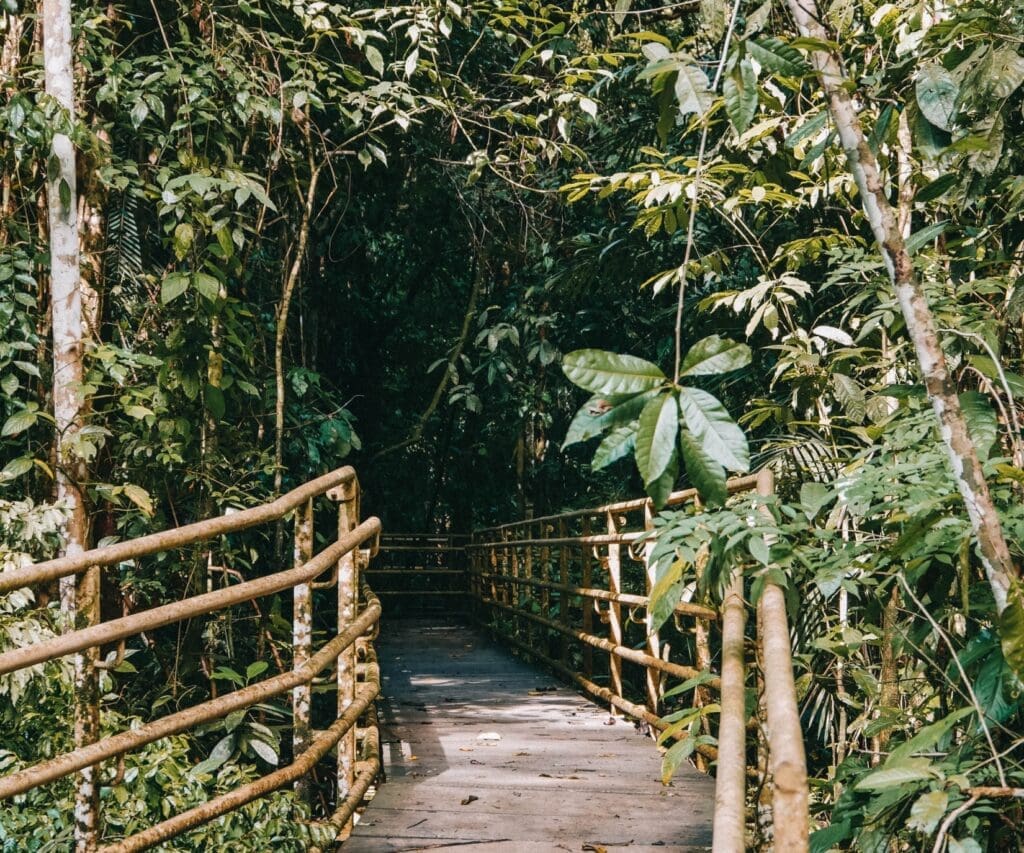
Best time to visit Manuel Antonio
There’s no real best time to visit Manuel Antonio National Park. Both the dry season and the wet season in Costa Rica bring their own pros and cons to bear on these jungle-clad beaches. When to visit will depend on your preference. Let’s take a closer look at both seasons:
Top things to do in Manuel Antonio
Manuel Antonio National Park is about experiencing the fabled biodiversity of Costa Rica firsthand. As such, the reserve itself is where you’ll want to be most of the time, but there are also some other activities in the surrounding region. Here’s some of the best things to do in Manuel Antonio that will make your trip worth it:
But that’s just the tip of the iceberg. Check out the full list of Manuel Antonio wildlife. Get ready for a wild adventure!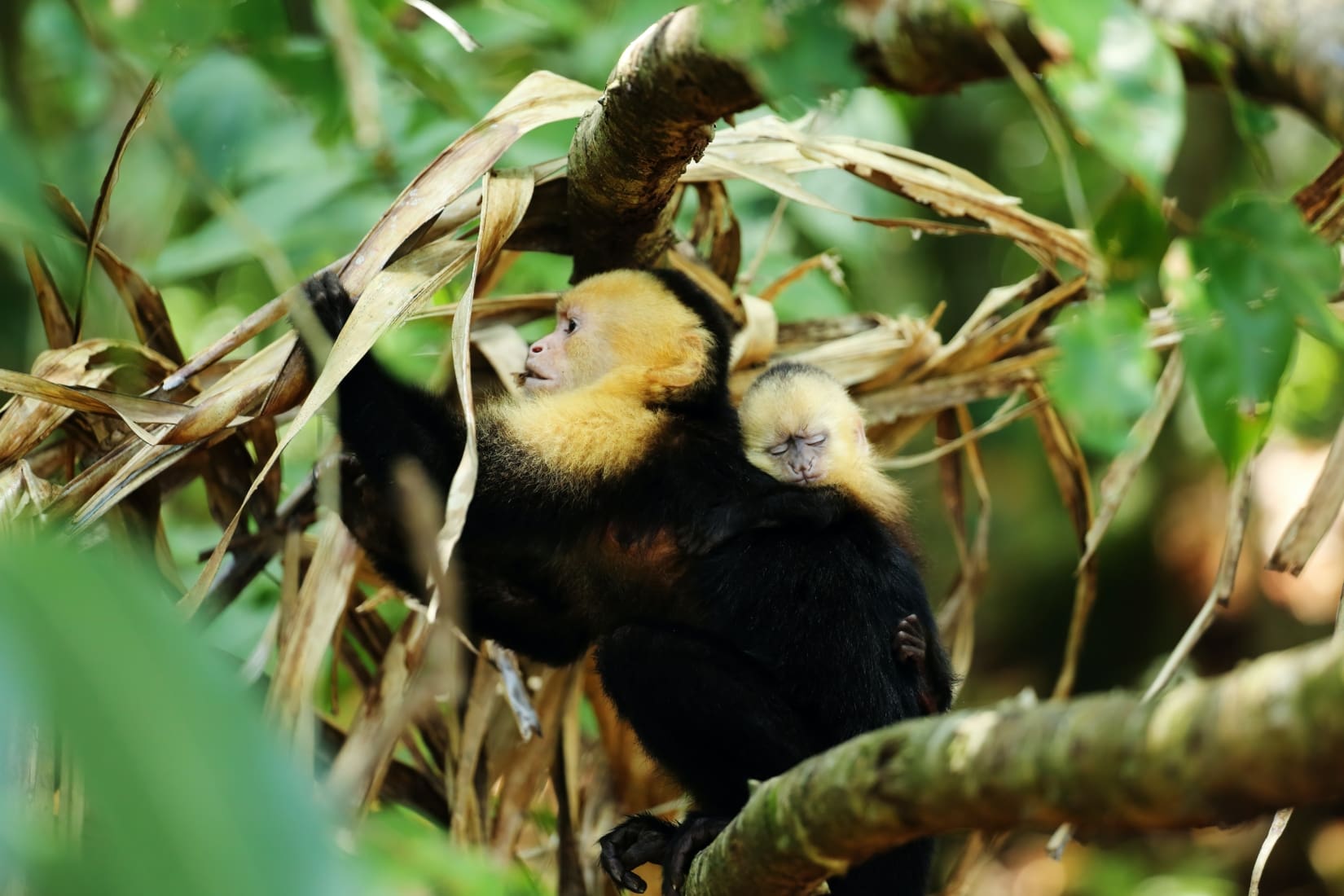
Entry and opening times at the Manuel Antonio National Park
You will have to pay to enter the Manuel Antonio National Park and there is also a parking fee if you have rented a car. Entry costs are typically included in the price of a tour, but be sure to check that beforehand.
The Manuel Antonio National Park is open every day of the year, apart from Tuesdays, from 7 AM to 4 PM. We recommend getting there as early as you possibly can, though. This is a hugely popular place and it’s all the more magical if you can beat the crowds.
Please note that this information may be subject to change, so it’s always a good idea to double-check the availability of entry and parking fees, as well as the Manuel Antonio National Park opening hours before your trip. Or better yet, leave all the nitty-gritty details to us when you book your trip with The Explorer’s Passage.
Where to stay in Manuel Antonio?
Given the ever-growing popularity of Manuel Antonio, it should hardly be a surprise that there’s now an overload of hotels and resorts to bed down in the region. And they aren’t just for sleeping. These pads have infinity pools, suites with canopy views, and even walking access to the beach.
Where to eat?
Just as there’s plenty of hotel options, there are also oodles of spots to eat. Here are a couple that we really love. Naturally, they are all outside of the main Manuel Antonio reserve.
Sample Manuel Antonio itinerary
A Costa Rica trip to Manuel Antonio sounds great, doesn’t it? Whether you plan the whole thing yourself or decide to come with us (fingers crossed!), we hope this comprehensive guide with recommendations on the top things to do in Manuel Antonio will serve you well.
How many days you need to spend in Manuel Antonio to get the full experience will depend on your preferences, but we are confident that our customizable 5-day adventure will leave you with an unforgettable Manuel Antonio experience.
Below is a sneak peek of what you can expect during your off-the-beaten-path adventure with The Explorer’s Passage. Everything is fully customizable to your idea of the perfect trip. Here’s what your first few days may look like:
For the full itinerary or a customized version, contact a dedicated adventure consultant at The Explorer’s Passage. And if you want to explore more, check out these other incredible places in Costa Rica.
Why travel with The Explorer’s Passage?
Experience Manuel Antonio with the best tour operator in Costa Rica. With over 30 years of experience in the tourism industry, our team has extensive local knowledge and networks that you can trust.
We pride ourselves on delivering extraordinary tours based on travelers’ needs and are humbled by our guests’ testimonials. In fact, our dedication has earned us a 5-star rating on Tripadvisor, and awards by Travel+Leisure Magazine and Newsweek.
Check us out and discover why so many travelers worldwide choose us. My team and I would love for you to join us on a trip to Manuel Antonio or any of our many other adventure trips!
If you liked this post, be sure to check out the 15 best places to visit in Costa Rica and 14 fast facts about Costa Rica. You’ll also find more of this kind of adventure content on our blog page!
Cheers,
Jeff
Jeff Bonaldi
Founder & CEO
The Explorer’s Passage
About Jeff Bonaldi
Jeff Bonaldi is the Founder and CEO of The Explorer’s Passage, a premier adventure travel company. His mission is to provide travelers with the opportunity to transform their lives and the planet through the power of adventure.
Learn more about Jeff’s story and his company HERE.
Share this amazing location!

